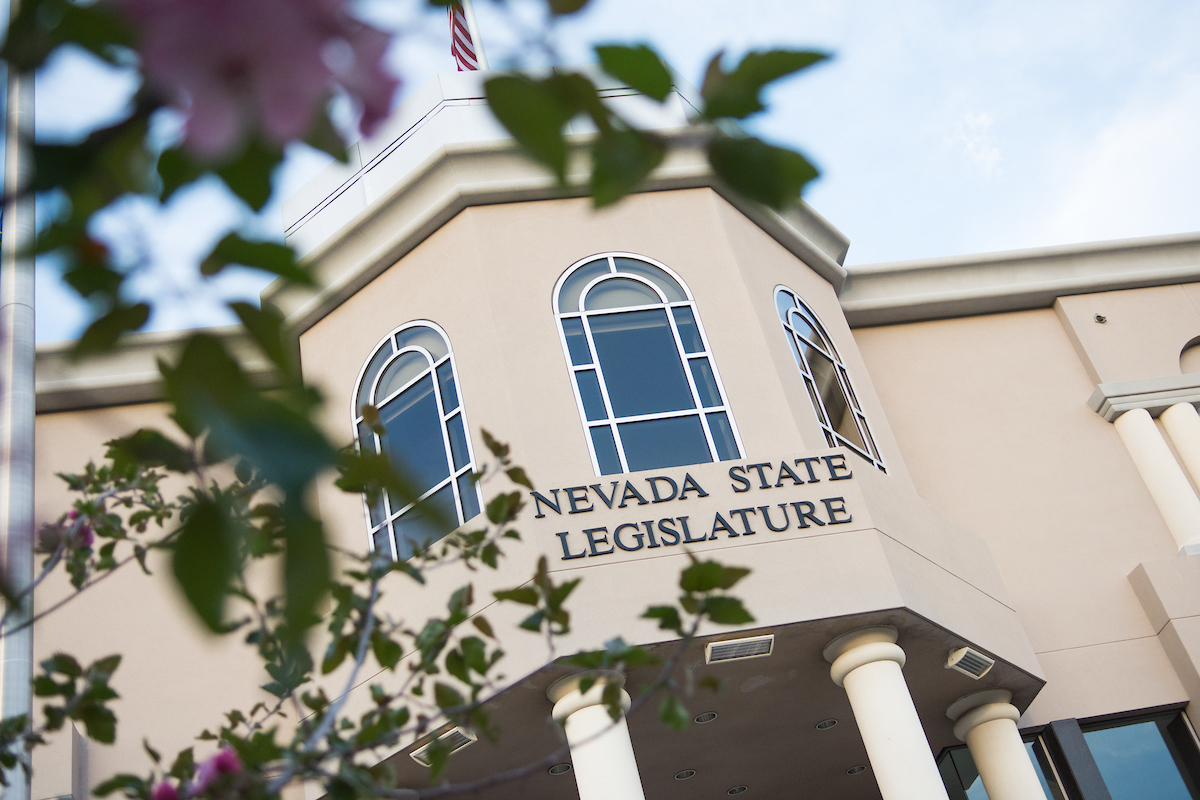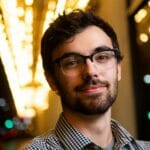How the Legislature is preparing for a special session during the COVID-19 pandemic

Early next month, hundreds of elected officials, state workers, lobbyists and members of the public will congregate in Carson City for a special legislative session to patch massive holes in the state’s budget.
But this upcoming special session will be unlike any other; the still ongoing COVID-19 pandemic and restrictions on large public gatherings will require major changes to the physical building space, structure and operations of the Legislature when it convenes.
Although legislative leaders and Gov. Steve Sisolak had previously said that they planned to hold a special session sometime in June, they said on Monday that more time was needed to prepare “proper safety protocols” for legislators, staff, and members of the public in the legislative building.
“While the Governor expressed concern over moving the date into the next fiscal year, he understands the important need of ensuring the safety of members and staff during a special session in the midst of the COVID-19 pandemic, in addition to ensuring the public has a safe way to participate in the process,” Sisolak’s office said in a statement on Monday.
But measures to put those safety changes in place are well underway.
Last week, The Nevada Independent toured the capital’s Legislative Building alongside new Legislative Counsel Bureau Director Brenda Erdoes and facility manager John Vietti, who showcased some of the safety features and changes that will greet lawmakers, lobbyists and members of the public in the coming weeks.
Although many safety features are still in the works, full-time legislative staff are actively working to bring the four-story legislative building into compliance with state and federal health guidelines to mitigate any spread of COVID-19.
Although Carson City has largely avoided a major outbreak of the virus (132 cases, with 98 recoveries), Erdoes said that it was important for the Legislature to take all possible precautions given that not only a large number of lawmakers but also lobbyists and members of the public will be coming from Las Vegas and all around the state.
“It is kind of daunting because of the small number of people that you're going to fit in those rooms where we usually pack a lot of people,” she said. “So it’s an interesting dilemma.”
So far, planned changes will include:
- Replacing handicap access buttons with wireless sensors on the building’s back door
- Only allowing two people in an elevator at one time
- Plexiglass barriers at the legislative police station
- Hiring of daytime janitors to clean and disinfect surfaces on an hourly basis
- Free and available hand sanitizer and masks
- Hands free faucets, toilets and doors inside bathrooms. Several water bottle filling stations are being installed, and any other freestanding water fountains will be covered during the special session
- Having only one chair at each table in the cafeteria area
- A reprogrammed HVAC system set at 100 percent pressure intake (meaning maximum air pressure coming into the building at all times), as well as improved air filters and potentially UV ventilation fans inside of building elevators
- Roping off sections of chairs and couches to only allow one person to sit at a time
Erdoes said that legislative staff were keeping track of the costs of all the changes to the building and believed it would all be reimbursable from federal funds.
Lawmakers will also see several COVID-19 related safety changes.
In the Senate chambers, staff are planning to install sheets of plexiglass between individual seats in the chamber, as the installed microphones and voting buttons for each seat are fairly close together. In the Assembly chambers, the large plexiglass windows separating the floor of the gallery from seating areas for the public and press have been removed, in order to physically distance the 42 Assembly members at least six feet apart and potentially sit some of them further back in the chamber.
Erdoes said that the second floor viewing areas of the Senate and Assembly may be closed to the public, but that was a decision to be made closer to whenever a special session is called.
She also said that the private caucus rooms used by lawmakers won’t be in use, and that legislative staff were working on finding other accommodations for Assembly and Senate caucuses that will allow members to remain six feet apart while meeting.
Erdoes said that in addition to spacing out seats in the Assembly and Senate chambers, legislative staff were working on a way to allow legislators to cast votes from their individual offices if deemed necessary to comply with social distancing rules while still meeting constitutional requirements to cast votes in the seat of government. Additional safety measures are being considered, such as making hallways or staircases one-way only.
She said many of the decisions and contingencies would be made closer to whenever the special session would be called, and would likely depend on the trendlines of COVID-19 cases and hospitalizations throughout the state and the region. Nevada has seen sizable upticks in COVID-19 cases and hospitalizations over the past several days.
“Right now, the numbers are going up in Northern Nevada,” she said. “So if they happen to go up tremendously, then that might make a different decision than if they were staying where they were.”
She also said that legislative staff planned to request anybody entering the building to wear a mask while inside, while noting that legislatures in other states had adopted special rule changes requiring legislators to wear a mask.
Other changes for members of the public are still up in the air. Democratic Assembly Majority Leader Teresa Benitez-Thompson said on a call with Northern Nevada small businesses last week that she expected the committee hearing rooms throughout the building would be used for public comment and broadcast into the main legislative chambers.
Erdoes said the specifics on public involvement were still being discussed, noting that legislative staff still didn’t know how many members of the public would likely be in the building or want to testify during the special session — and that they would still have to abide by the governor’s limits on gatherings of 50 or more people or exceeding 50 percent of fire code occupancy.
“We haven't ever hit those numbers, haven’t worried about it,” she said. “But now, the social distancing, it's a little different.”

